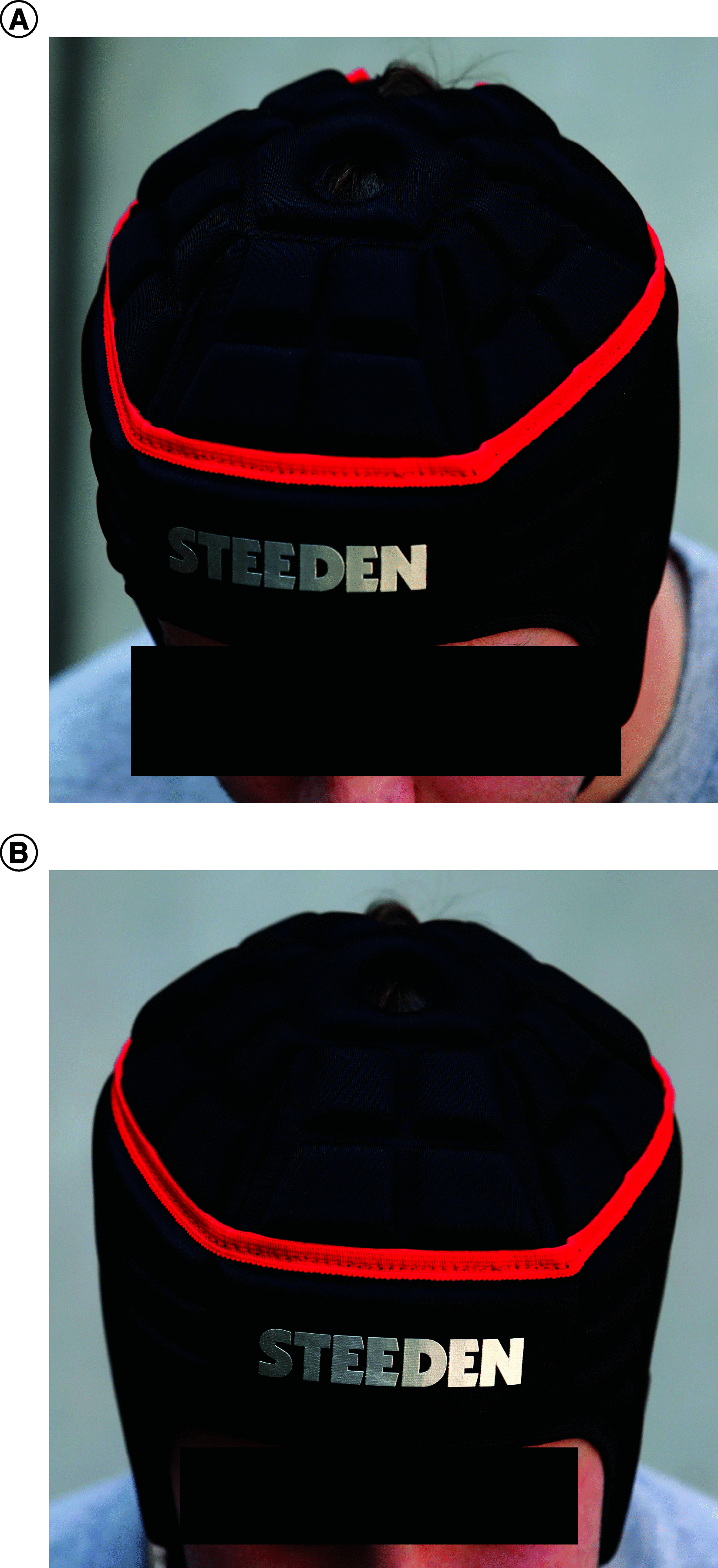A pilot case crossover study of the use of padded headgear in junior Australian football
- PMID: 36694693
- PMCID: PMC9855304
- DOI: 10.2217/cnc-2022-0005
A pilot case crossover study of the use of padded headgear in junior Australian football
Abstract
Aim: To explore soft-shell padded headgear (HG) use, player behavior and injuries associated with HG in junior Australian football.
Methods: Prospective case-crossover with head impact measurement, injury surveillance and video review.
Results: 40 players (mean age: 12.43 years, standard deviation: 1.36) across 15 matches were observed. Frequency of head/neck (p = 0.916) or body (p = 0.883) contact events, and match incidents were similar between HG and no HG conditions. Without HG, females had higher frequency of body contacts compared with males (p = 0.015). Males sustained more body contacts with HG than without HG (p = 0.013).
Conclusion: Use of HG in junior football was not associated with injury or head contact rate. Associations between HG use and body contact may differ across sexes. (ID: ACTRN12619001165178).
Keywords: behavior; headgear; injury surveillance; mild traumatic brain injury; sport-related concussion; youth football.
© 2023 Monash University.
Figures
References
-
- Makovec Knight J, Mitra B, McIntosh A et al. Padded headgear in junior and youth Australian football: player insights from a national survey. Clin. J. Sport Med. In Press (2022). - PubMed
-
- McIntosh AS, McCrory P, Finch C, Best J, Chalmers D, Wolfe R. Does padded headgear prevent head injury in rugby union football? Med. Sci. Sports Exerc. 41(2), 306 (2009). - PubMed
-
- Archbold HA, Rankin AT, Webb M et al. RISUS study: Rugby Injury Surveillance in Ulster Schools. Br. J. Sports Med. 51(7), 600–606 (2017). - PubMed
-
- Delaney JS, Al-Kashmiri A, Drummond R, Correa JA. The effect of protective headgear on head injuries and concussions in adolescent football (soccer) players. Br. J. Sports Med. 42(2), 110–115 discussion 115 (2008). - PubMed
LinkOut - more resources
Full Text Sources


